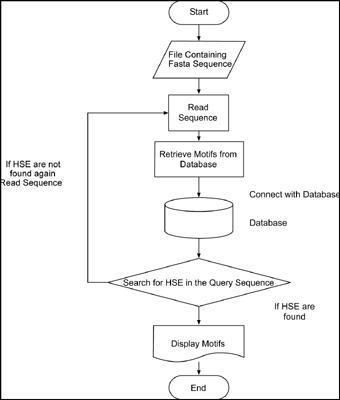Current Bioinformatics ( IF 4 ) Pub Date : 2020-02-29 , DOI: 10.2174/1574893614666190102151956 Sarah Rizwan Qazi 1 , Noor ul Haq 2 , Shakeel Ahmad 3 , Samina N. Shakeel 1

|
Background: Previous methods used to discover cis-regulatory motifs in promoter region of plant genes possess very limited performance, especially for analysis of novel and rare motifs. Different plant genes have differential expression under different environmental or experimental conditions and modular regulation of cis-regulatory sequences in promoter regions of the same or different genes. It has previously been revealed that Heat Shock Proteins (HSPs) creation is correlated with plant tolerance under heat and other stress conditions. Regulation of these HSP genes is controlled by interactions between heat shock factors (HSFs) with cis-acting motifs present in the promoter region of the genes. Differential expression of these HSP genes is because of their unique promoter architecture, cis-acting sequences and their interaction with HSFs.
Objective: A versatile promoter analysis tool was proposed for identification and analysis of promoters of HSPs.
Methods: Heat Shock Element Analysis Tool (HSEAT) has been implemented in java programming language using pattern recognition approach. This tool has build-in MS access database for storing different motifs.
Results: HSEAT has been designed to detect different types of Heat Shock Elements (HSEs) in promoter regions of plant HSPs with integration of complete analysis of plant promoters to the tool. HSEAT is user-friendly, interactive application to discover various types of HSEs e.g. TTC Rich Types, Gap Types and Prefect HSE as well as STRE in HSPs. Here we examined and evaluated some known HSP promoters from different plants using this tool with already available tools.
Conclusion: HSEAT has extensive potential to explore conserved or semi-conserved motifs or potential binding sites of different transcription factors for other stress regulating genes. This tool can be found at https://sourceforge.net/projects/heast/.
中文翻译:

HSEAT:一种用于植物热激元素分析,图形识别和分析的工具
背景:以前用于发现植物基因启动子区域顺式调控基序的方法的性能非常有限,尤其是用于分析新颖和稀有基序的方法。不同的植物基因在不同的环境或实验条件下具有不同的表达,并且在相同或不同基因的启动子区域中顺式调控序列的模块化调控。先前已经揭示,热休克蛋白(HSP)的产生与在热和其他胁迫条件下的植物耐受性相关。这些热休克蛋白基因的调控是通过热激因子(HSF)与基因启动子区域中存在的顺式作用基序之间的相互作用来控制的。这些HSP基因的差异表达是由于其独特的启动子结构,顺式作用序列及其与HSF的相互作用。
目的:提出了一种多功能的启动子分析工具,用于鉴定和分析HSP启动子。
方法:热冲击元素分析工具(HSEAT)已使用模式识别方法以Java编程语言实现。该工具具有内置的MS Access数据库,用于存储不同的图案。
结果:通过将植物启动子的完整分析整合到工具中,HSEAT被设计为检测植物HSP启动子区域中的不同类型的热激元件(HSE)。HSEAT是用户友好的交互式应用程序,可发现各种类型的HSE,例如TTC丰富类型,间隙类型和Prefect HSE以及HSP中的STRE。在这里,我们使用此工具和已经可用的工具检查并评估了一些来自不同植物的已知HSP启动子。
结论:HSEAT具有广泛的潜力,可以探索保守或半保守的基序或不同转录因子与其他胁迫调控基因的潜在结合位点。可以在https://sourceforge.net/projects/heast/找到该工具。



























 京公网安备 11010802027423号
京公网安备 11010802027423号